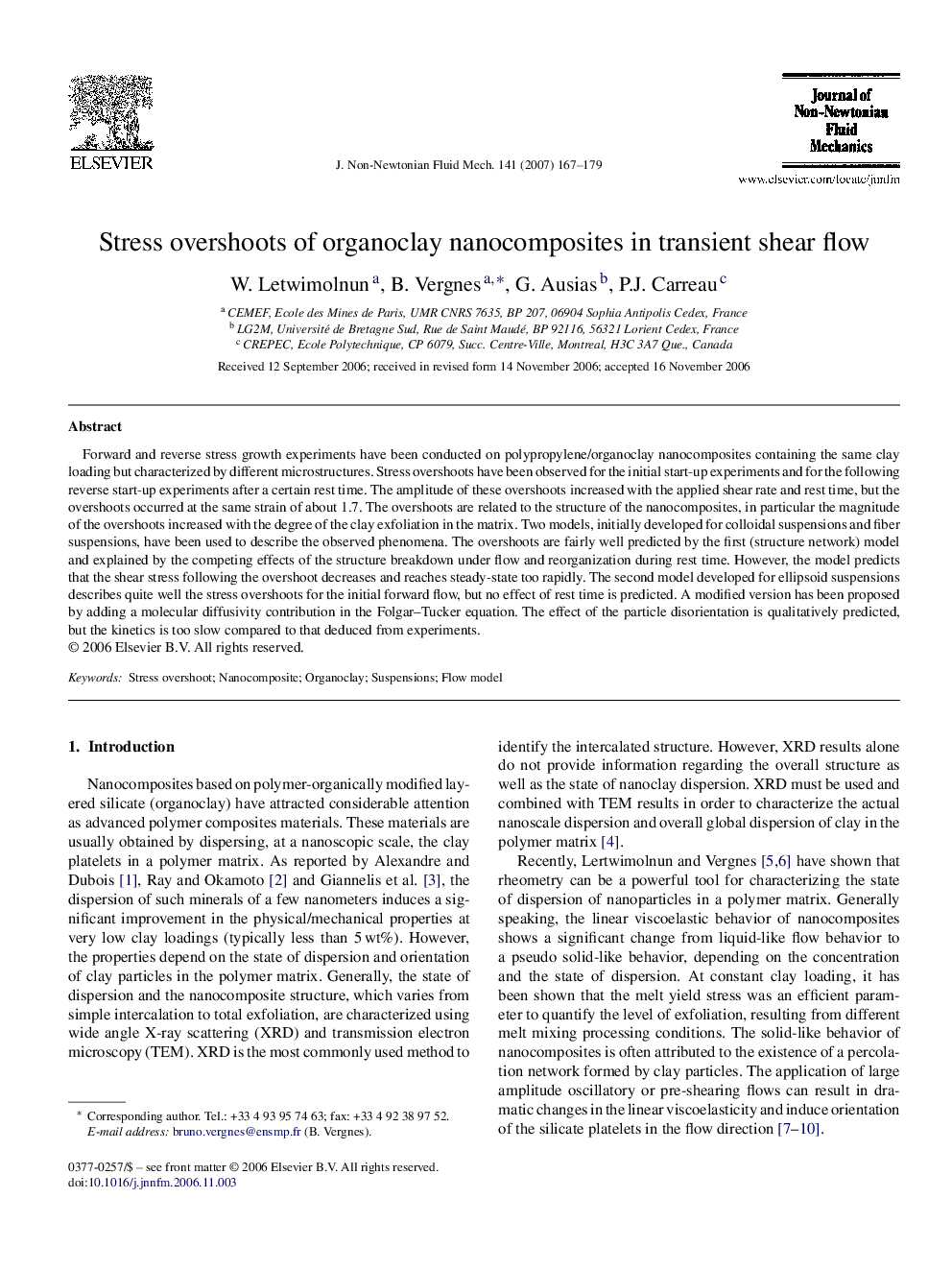| Article ID | Journal | Published Year | Pages | File Type |
|---|---|---|---|---|
| 671360 | Journal of Non-Newtonian Fluid Mechanics | 2007 | 13 Pages |
Forward and reverse stress growth experiments have been conducted on polypropylene/organoclay nanocomposites containing the same clay loading but characterized by different microstructures. Stress overshoots have been observed for the initial start-up experiments and for the following reverse start-up experiments after a certain rest time. The amplitude of these overshoots increased with the applied shear rate and rest time, but the overshoots occurred at the same strain of about 1.7. The overshoots are related to the structure of the nanocomposites, in particular the magnitude of the overshoots increased with the degree of the clay exfoliation in the matrix. Two models, initially developed for colloidal suspensions and fiber suspensions, have been used to describe the observed phenomena. The overshoots are fairly well predicted by the first (structure network) model and explained by the competing effects of the structure breakdown under flow and reorganization during rest time. However, the model predicts that the shear stress following the overshoot decreases and reaches steady-state too rapidly. The second model developed for ellipsoid suspensions describes quite well the stress overshoots for the initial forward flow, but no effect of rest time is predicted. A modified version has been proposed by adding a molecular diffusivity contribution in the Folgar–Tucker equation. The effect of the particle disorientation is qualitatively predicted, but the kinetics is too slow compared to that deduced from experiments.
